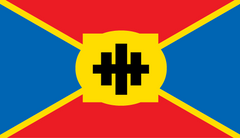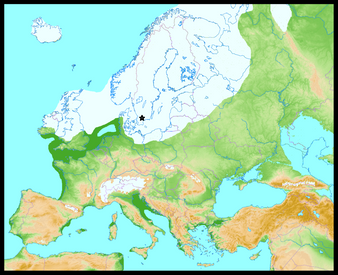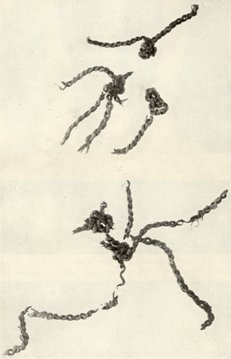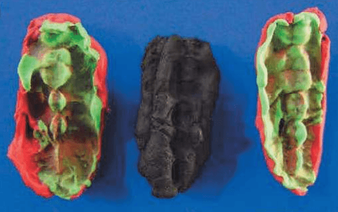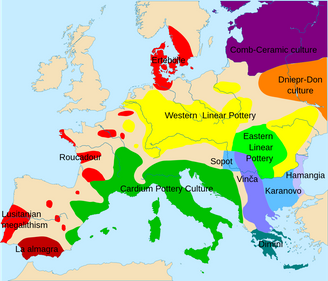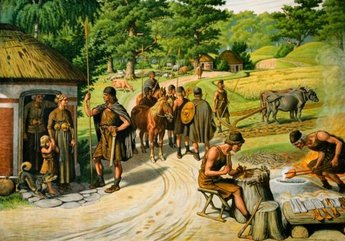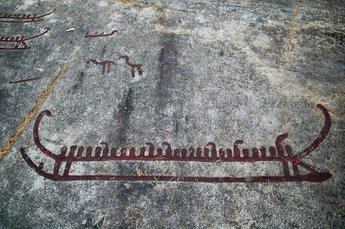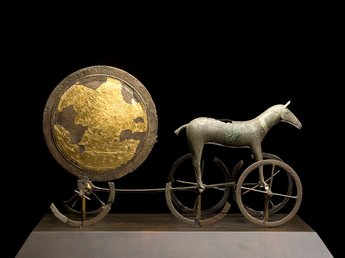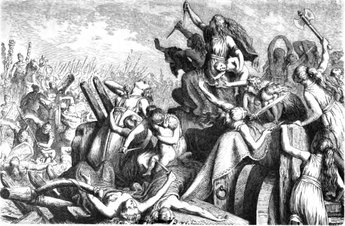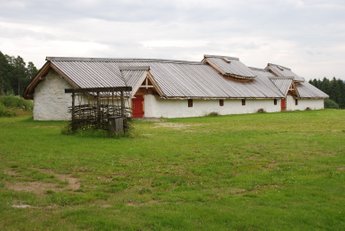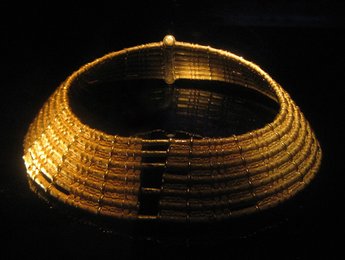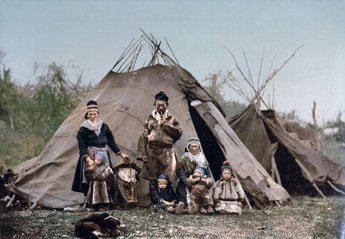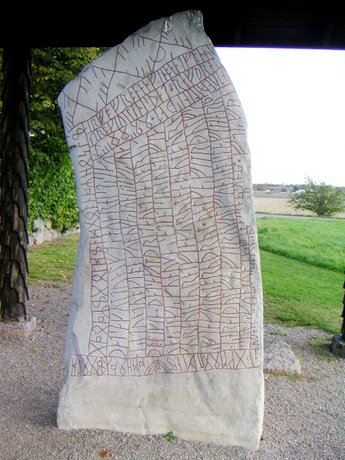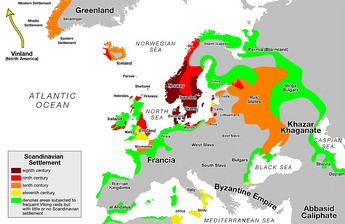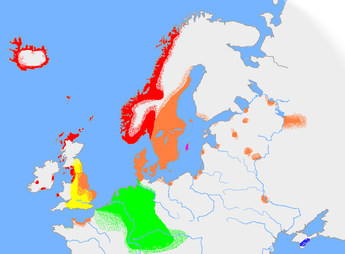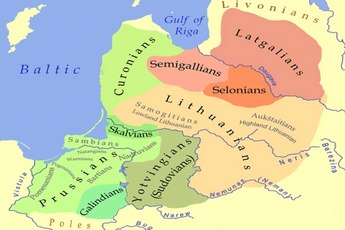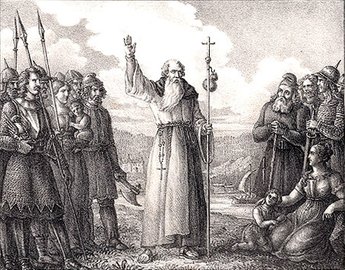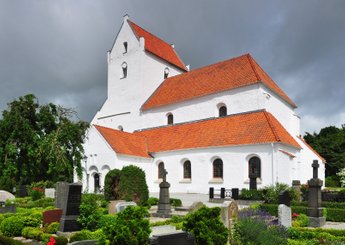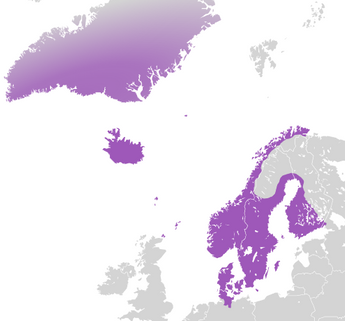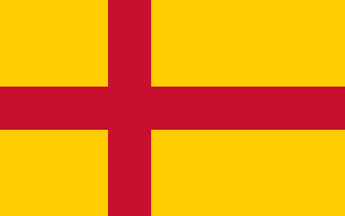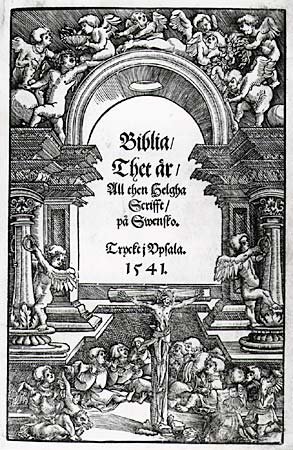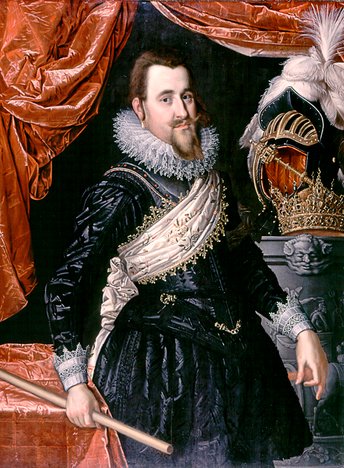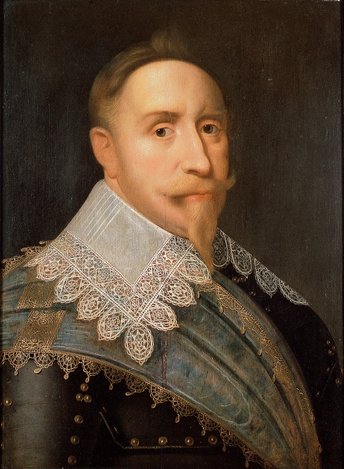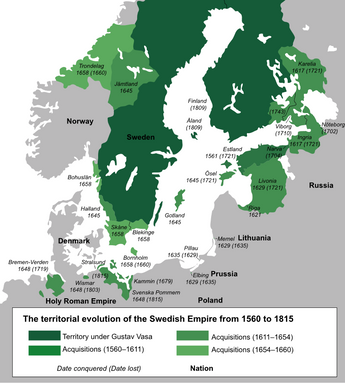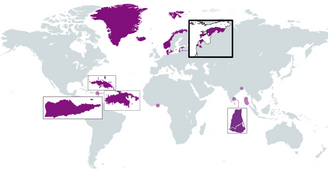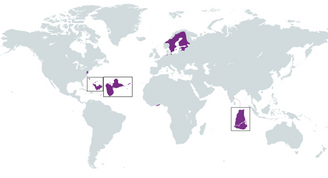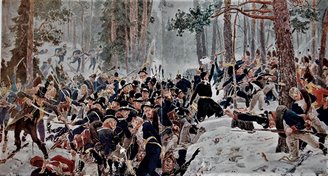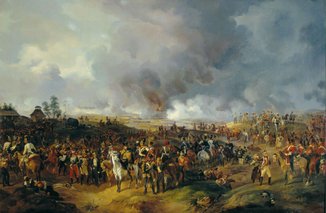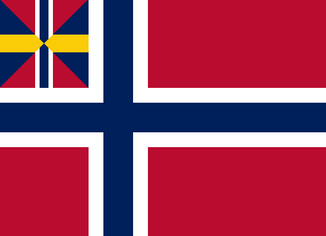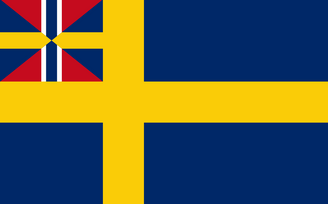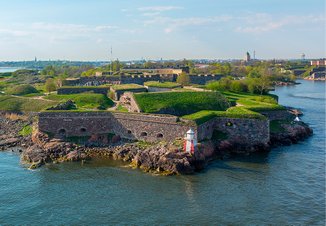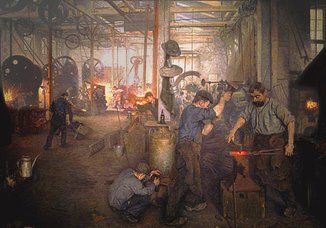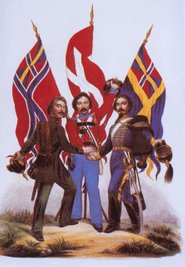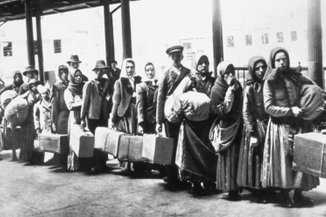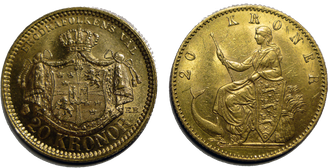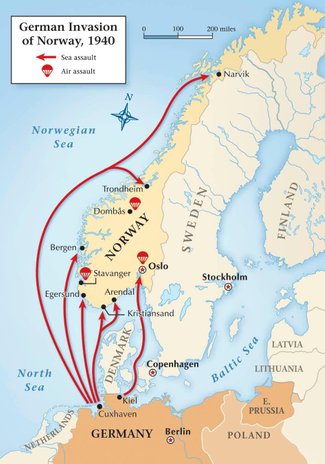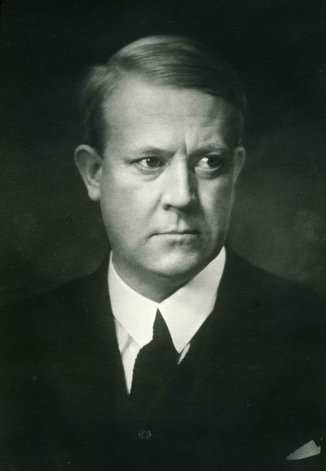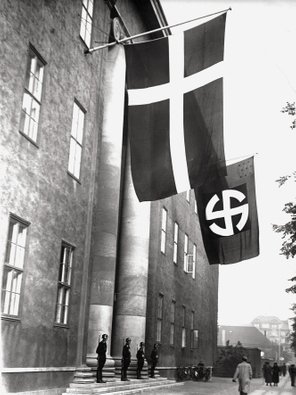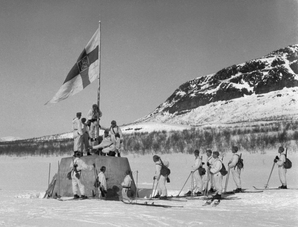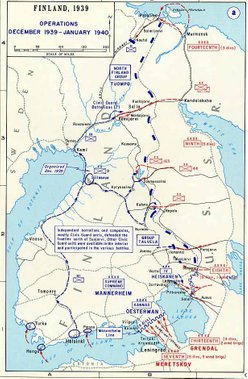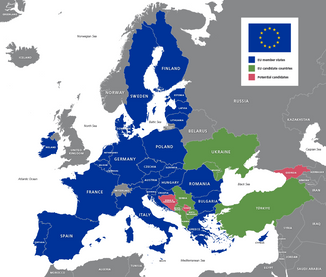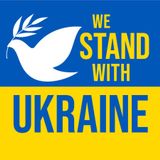AN IN-DEPTH LOOK AT OUR HISTORY
Our micronation's history is intertwined with the history of our neighboring countries. We share common ancestors, languages, cultures, traditions, and religions.
The same paradigm has influenced us shifts through the millennia, and we are proud to share that history even though Unixploria and our surrounding nations were not yet formed.
Paleolithic (125,000 - 10,000 BC)
Our region's oldest (preserved) human settlement is the Wolf Cave (Finnish: Susiluola, Swedish: Varggrottan) in Kristinestad, near the border with Bötom in Ostrobothnia, Finland. It is the only site in the Nordic region where traces can be found of Neanderthals and, thus, the oldest known human settlement in the Nordic region. Investigations conclude that the Neanderthals lived and worked in the cave during the Paleolithic Period about 125,000 years ago, i.e., before the last ice age.
The Paleolithic Period (also called the Old Stone Age) it occurred during the Weichselian glaciation when the area was entirely covered with ice. However, it was likely that during the occasional withdrawal of the ice sheet, people were living in our region.
Around 14,000 BC, people migrated to the area from the South and South East. These people immigrated from those areas of Europe that were not ice-covered. During this time, commonly occurring animals were reindeer, wolf, and the hare, and some species became extinct due to climate change, such as woolly rhinoceros, mammoth, and giant deer. As these species died, the way of living changed during the Mesolithic Period. Remains, mainly in Skåne, the southernmost province of Sweden, are preserved.
Mesolithic (10,000-4,000 BC)
Since many of the essential food animals died out, the inhabitants were forced to rely on hunting for small game and fishing, which is one of the reasons that this time is also called "the hunter age."
Large parts of the Nordic region were underwater or beneath the ice. Only land areas above 75 meters were above the surface during this time. Due to the sea's spread and the extinction of terrestrial animals, marine resources were of great importance to the Mesolithic cultures.
Lakes such as the Swedish Lake Vänern and Vättern are meltwater collections with counterparts in the Great Lakes of North America, and ice melting has formed pine forests.
From this time, the oldest places for settlements in Northern Scandinavia could be found in Aareavaara and Kangos in Pajala municipality and Dumpo-kjauratj in the city of Arjeplog (9,000-10 700 years ago). People near the ice sheet's edge seem to have used these settlements. These early inhabitants of the land are believed to have come from the north.
During this period, the de-glaciation led to a continual land uplift as the Earth's crust rebounded from the pressure exerted by the ice. This process, which was initially very rapid, continues to this day.
Neolithic
During the 5th millennium B.C., the Ertebølle people learned pottery from neighboring tribes in the south, who had begun cultivating the land and keeping animals. They also started farming the ground, and by 3000 BC, they became part of the megalithic Funnelbeaker culture.
During the 4th millennium B.C., these Funnelbeaker tribes expanded into Sweden up to Uppland. The Nøstvet and Lihult tribes learned new technology from the advancing farmers (but not agriculture) and became the Pitted Ware cultures towards the end of the 4th millennium B.C. These Pitted Ware tribes halted the advance of the farmers and pushed them south into southwestern Sweden, but some say that the farmers were not killed or chased away but voluntarily joined the Pitted Ware culture and became part of them. At least one settlement appears to be mixed, the Alvastra pile-dwelling.
It is unknown what language these early Scandinavians spoke. Still, towards the end of the 3rd millennium B.C., they were overrun by new tribes who many scholars think said Proto-Indo-European, the Battle-Axe culture. These new people advanced up to Uppland and the Oslofjord and probably provided the language that was the ancestor of the modern Scandinavian languages. They were cattle herders, and with them, most of southern Scandinavia entered the Neolithic. The transmission of metallurgy to southern Scandinavia coincided with the introduction of long barrows, causewayed enclosures, two-aisled houses, and specific artifacts. It seems to have enabled the establishment of a fully Neolithic society.
Nordic Bronze Age
Even though Scandinavians joined the European Bronze Age cultures relatively late through trade. Scandinavian sites present rich and well-preserved wool, wood, and imported Central European bronze and gold objects. During this period, Scandinavia became the first known advanced civilization in this area following the Nordic Stone Age. The Scandinavians adopted many central European and Mediterranean symbols at the same time that they created new styles and objects. Mycenaean Greece, the Villanovan Culture, Phoenicia, and Ancient Egypt have all been identified as possible sources of influence in Scandinavian artwork from this period. The foreign power is believed to originate with the amber trade, and amber found in Mycenaean graves from this period derives from the Baltic Sea. Several petroglyphs depict ships, and the large stone formations known as stone ships indicate that shipping played an essential role in the culture. Several petroglyphs depict ships that could be Mediterranean.
There are many mounds and fields of petroglyphs from this period, but their signification is long since lost. There are also numerous artifacts of bronze and gold. The rather crude appearance of the petroglyphs compared to the bronze works has given rise to the theory that different cultures or social groups produced them. No written language existed in the Nordic countries during the Bronze Age.
The Nordic Bronze Age was characterized by a warm climate (which is compared to that of the Mediterranean), which permitted a relatively dense population. Still, it ended with a climate change consisting of a deteriorating, wetter, and colder climate (sometimes believed to have given rise to the legend of the Fimbulwinter). It looks pretty likely that the environment pushed the Germanic tribes southwards into continental Europe. A thousand years later, the numerous East Germanic tribes that claimed Scandinavian origins (Burgundians, Goths, and Heruls), as did the Lombards, rendered Scandinavia (Scandza) the name "womb of nations" in Jordanes' Getica. During this time, there was a Scandinavian influence in Eastern Europe.
Pre-Roman Iron Age
The Nordic Bronze Age ended with a deteriorating, colder, and wetter climate. This period is known for being poor in archaeological finds.
In 113–101 BC, two Germanic tribes from Jutland, in modern-day Denmark, attacked the Roman Republic in what is today known as the Cimbrian War. These two tribes, the Cimbri and the Teutons, initially inflicted the heaviest losses that Rome had suffered since the Second Punic War. The Roman legions eventually defeated the Cimbri and the Teutons. This was also when the Germanic tribes became known to the Mediterranean world and the Romans.
Initially, iron was valuable and was used for decoration. The oldest objects were needles, but swords and sickles were also found. Bronze continued to be used throughout the period but was primarily used for decoration. The traditions were a continuity from the Nordic Bronze Age, but there were strong influences from the Hallstatt culture in Central Europe. They continued with the Urnfield culture tradition of burning corpses and placing the remains in urns.
During the last centuries, influences from the Central European La Tène culture spread to Scandinavia from northwestern Germany. There are finds from this period from all the provinces of southern Scandinavia. From this time, archaeologists have found swords, shield bosses, spearheads, scissors, sickles, pincers, knives, needles, buckles, kettles, etc. Bronze continued to be used for torques and kettles, the style of which was a continuity from the Bronze Age. One of the most prominent finds is the Dejbjerg wagon from Jutland, a four-wheeled wagon of wood with bronze parts.
Roman Iron Age
While many Germanic tribes sustained continued contact with the culture and military presence of the Roman Empire, much of Scandinavia existed on the most extreme periphery of the Latin world. Besides the passing references to the Swedes (Suiones) and the Geats (Gautoi), much of Scandinavia remained unrecorded by Roman authors.
In Scandinavia, goods such as coins (more than 7,000), vessels, bronze images, glass beakers, enameled buckles, weapons, etc., were imported. Moreover, the style of metal objects and clay vessels was markedly Roman. Some things appeared for the first time, such as shears and pawns.
There are also many bog bodies from this time in Denmark, Schleswig, and southern Sweden. Together with the bodies, there are weapons, household wares, and wool clothes. Great ships made for rowing have been found since the 4th century in Nydam Mosse in Schleswig. Many were buried without burning, but the burning tradition regained popularity.
Through the 5th century and 6th centuries, gold and silver became more common. Much of this can be attributed to the ransacking of the Roman Empire by Germanic tribes, from which many Scandinavians returned with gold and silver.
Germanic Iron Age
The period succeeding the fall of the Roman Empire is known as the Germanic Iron Age. It is divided into the early Germanic Iron and the late Germanic Iron Age, which in Sweden is known as the Vendel Age, with rich burials in the basin of Lake Mälaren. The early Germanic Iron Age is when the Danes appeared in history, and according to Jordanes, they were of the same stock as the Swedes (means suetidi) and had replaced the Heruls.
During the fall of the Roman empire, abundant gold flowed into Scandinavia, and there are excellent works in gold from this period. Gold was used to make scabbard mountings and bracteates; notable examples are the Golden horns of Gallehus.
After the Roman Empire had disappeared, gold became scarce, and Scandinavians began to make objects of gilded bronze, with decorations of interlacing animals in Scandinavian style. The early Germanic Iron Age decorations show animals that are relatively faithful anatomically. Still, in the late Germanic Iron Age, they evolve into intricate shapes with interlacing and interwoven limbs that are well-known from the Viking Age.
In February 2020, Secrets of the Ice Program researchers discovered a 1,500-year-old Viking arrowhead dating back to the Germanic Iron Age and locked in a glacier in southern Norway caused by the climate change in the Jotunheimen Mountains. The arrowhead made of iron was revealed with its cracked wooden shaft, and a feather is 17 cm long and weighs just 28 grams.
Sami peoples
Since prehistoric times, the Sami people of Arctic Europe have lived and worked in an area that stretches over the northern parts of the regions now known as Norway, Sweden, Finland, and the Russian Kola Peninsula. They have inhabited Fenno-Scandinavia and Russia's north and sub-arctic regions for at least 5,000 years. The Sami are counted among the Arctic peoples and are members of circumpolar groups such as the Arctic Council Indigenous Peoples' Secretariat.
Petroglyphs and archeological findings, such as settlements dating from about 10,000 B.C., can be found in the traditional lands of the Sami. These hunters and gatherers of the late Paleolithic and early Mesolithic were named Komsa by the researchers, as what they identified themselves as is unknown.
The Sami have been recognized as an indigenous people in Norway since 1990, according to ILO Convention 169. Hence, according to international law, the Sami people in Norway are entitled to special protection and rights.
Viking Age
During the Viking Age, the Vikings (Scandinavian warriors and traders) raided, colonized, and explored parts of Europe, the Middle East, northern Africa, and as far west as Newfoundland.
The beginning of the Viking Age is commonly given as 793, when Vikings pillaged the important British island monastery of Lindisfarne. Its end is marked by the unsuccessful invasion of England by Harald Hårdråde in 1066 and the Norman conquest.
Age of Settlement
Scandinavian settlements and voyages
The age of settlement began around 800 AD. The Vikings invaded and eventually settled in Scotland, England, Greenland, the Faroe Islands, Iceland, Ireland, Livonia, Normandy, the Shetland Islands, Sicily, Rus' and Vinland, on what is now known as the Island of Newfoundland. Swedish settlers were present primarily in Rus, Livonia, and other eastern regions, while the Norwegians and the Danish were concentrated mainly in western and northern Europe.
These eastern-traveling Scandinavian migrants were eventually known as Varangians (væringjar, meaning "sworn men"). According to the oldest Slavic sources, these Varangians founded Kievan Rus, the primary East European state before the Mongol invasions. The Western-led warriors, eventually known as Vikings, left excellent cultural marks on regions such as French Normandy, England, and Ireland, where Viking invaders founded the city of Dublin. Iceland first became colonized in the late 9th century.
Relation with the Baltic Slavs
The Slavic and Viking cultures influenced each other: Slavic and Viking tribes were closely linked, fighting, intermixing, and trading. Before and during this age, the Norsemen significantly integrated with the Slavs. In the Middle Ages, a significant amount of ware was transferred from Slavic areas to Scandinavia, and Denmark was a melting pot of Slavic and Scandinavian elements. The presence of Slavs in Scandinavia is more significant than previously thought, although the Slavs and their interaction with Scandinavia have not been adequately investigated.
A grave of a warrior-woman dating to the 10th century in Denmark was long thought to belong to a Viking. However, new analyses revealed that the woman was a Slav from present-day Poland. The first king of the Swedes, Eric, was married to Gunhild of the Polish House of Piast. Likewise, his son, Olof, fell in love with Edla, a Slavic woman, and took her as his frilla (concubine). She bore him a son and a daughter: Emund the Old, King of Sweden, and Astrid, Queen of Norway. Cnut the Great, King of Denmark, England, and Norway, was the son of a daughter of Mieszko I of Poland, possibly the former Polish queen of Sweden, wife of Eric.
Christianization
During the Christianization of Norway, King Olaf ordered seidmen tied and left on a skerry at ebb, resulting in a protracted death by drowning and securing Christian hegemony in the Norwegian kingdom.
Viking religious beliefs were heavily connected to Norse mythology. Vikings heavily emphasized battle and honor and focused on Valhalla, a mythical home with the gods for fallen warriors. Another Norse tradition was blood feuds, which particularly devastated Iceland.
Christianity in Scandinavia came later than in most parts of Europe. In Denmark, Harald Bluetooth Christianized the country around 980. The process of Christianization began in Norway during the reigns of Olaf Tryggvason (reigned 995 AD–c.1000 AD) and Olaf II Haraldsson (reigned 1015 AD–1030 AD). Olaf and Olaf II had been baptized voluntarily outside of Norway. Norway's conversion from the Norse religion to Christianity was mainly the result of English missionaries. Olaf II managed to bring English clergy to his country.
As a result of the adoption of Christianity by the monarchy and eventually the entirety of the country, traditional shamanistic practices were marginalized and ultimately persecuted. Völvas, practitioners of seid, a Scandinavian pre-Christian tradition, were executed or exiled under newly Christianized governments in the eleventh and twelfth centuries.
The Icelandic Commonwealth adopted Christianity in 1000 AD after pressure from Norway. The Goði-chieftain Þorgeirr Ljósvetningagoði was instrumental in bringing this about. By formulating a law that made Christianity the official religion and that religious practice in the private sphere was outside of the law, he managed to stave off the threat from Norway, limiting the feuds and avoiding a religiously motivated civil war.
Sweden required a little more time to transition to Christianity, with indigenous religious practices commonly held in localized communities until the end of the eleventh century. A brief Swedish civil war ensued in 1066, primarily reflecting the divisions between practitioners of indigenous religions and advocates of Christianity; by the mid-twelfth century, the Christian faction appeared to have triumphed; the once resistant center of Uppsala became the seat of the Swedish Archbishop in 1164.
The Christianization of Scandinavia occurred nearly simultaneously with the end of the Viking era. The adoption of Christianity is believed to have aided in the absorption of Viking communities into the European continent's more significant religious and cultural framework.
Middle Ages (1100–1600)
The Kalmar Union in 1397
The Kalmar Union (Danish/Norwegian/Swedish: Kalmarunionen) was a series of personal unions (1397–1520) that united the three kingdoms of Denmark, Norway, and Sweden under a single monarch.
The countries had given up their sovereignty, but not their independence, and diverging interests (mainly Swedish dissatisfaction over the Danish and Holsteinish dominance) gave rise to a conflict that would hamper it from the 1430s until its final dissolution in 1523.
The Kalmar War in 1611–1613 was the last serious (although possibly unrealistic) attempt by a Danish King (Christian IV) to re-create the Kalmar Union by force. However, The Kalmar War ended with a minor Danish victory and not the total defeat of the Swedes. No more Danish attempts would be made to re-create the Kalmar Union following this war.
Reformation
The Protestant Reformation came to Scandinavia in the 1530s, and Scandinavia soon became one of the heartlands of Lutheranism. Catholicism almost wholly vanished in Scandinavia, except for a small population in Denmark.
17th century
Thirty Years War
The Thirty Years' War was fought between 1618 and 1648, principally in the Central European territory of the Holy Roman Empire but also involving most of the major continental powers. Although it was a religious conflict between Protestants and Catholics, the self-preservation of the Habsburg dynasty was also a central motive. The Danes and then Swedes intervened at various points to protect their interests.
The Danish intervention began when Christian IV (1577–1648), the King of Denmark-Norway, himself a Lutheran, helped the German Protestants by leading an army against the Holy Roman Empire, fearing Denmark's sovereignty as a Protestant nation was threatened. The period began in 1625 and lasted until 1629. Christian IV profited greatly from his policies in northern Germany. Hamburg had been forced to accept Danish sovereignty in 1621, and in 1623 the Danish heir apparent was appointed Administrator of the Prince-Bishopric of Verden. In 1635 he became Administrator of the Prince-Archbishopric of Bremen too.
As an administrator, Christian IV had done remarkably well, obtaining for his kingdom a level of stability and wealth virtually unmatched elsewhere in Europe, paid for by the Øresund toll and extensive war reparations from Sweden. It also helped that the French regent Cardinal Richelieu was willing to pay for a Danish incursion into Germany. Christian IV invaded at the head of a mercenary army of 20,000 men. Still, the Danish forces were severely beaten, and Christian IV had to sign an embarrassing defeat, the first in a series of military setbacks to weaken his kingdom.
The Swedish intervention began in 1630 and lasted until 1635. Some within Ferdinand II's court believed that Wallenstein wanted to take control of the German princes and thus gain influence over the emperor. Ferdinand II dismissed Wallenstein in 1630. He later recalled him after Gustavus Adolphus attacked the empire and prevailed in several significant battles.
Like Christian IV before him, Gustavus Adolphus came to aid the German Lutherans to forestall Catholic aggression against their homeland and obtain economic influence in the German states around the Baltic Sea. Also, like Christian IV, Gustavus Adolphus was subsidized by Richelieu, the Chief Minister of King Louis XIII of France, and by the Dutch. From 1630 to 1634, they drove the Catholic forces back and regained much of the occupied Protestant lands.
Rise of Sweden and the Swedish Empire
Sweden was at the height of its territorial expansion following the Treaty of Roskilde in 1658. The dark green area shows the extent of the Swedish motherland, as seen in the 17th century.
The Swedish rise to power began under the rule of Charles IX. Sweden started consolidating its empire. During the Ingrian War, Sweden expanded its territories eastward. Several other wars with Poland, Denmark-Norway, and German enabled further Swedish expansion, although there were some setbacks, such as the Kalmar War. Several other wars followed, including the Northern Wars and the Scanian War. Denmark suffered many defeats during this period. Finally, under the rule of Charles XI, the empire was consolidated under a semi-absolute monarchy.
18th century
Great Northern War
The Great Northern War was fought between a coalition of Russia, Denmark-Norway, and Saxony-Poland (from 1715, also Prussia and Hanover) on one side and Sweden on the other from 1700 to 1721.
It started with a coordinated attack on Sweden by the coalition in 1700 and ended in 1721 with the conclusion of the Treaty of Nystad and the Stockholm Treaties. As a result of the war, Russia supplanted Sweden as the dominant power on the Baltic Sea and became a significant player in European politics.
Colonialism
Sweden and Denmark-Norway maintained several colonies outside Scandinavia, starting in the 17th century and lasting until the 20th century. In the North Atlantic, Greenland, Iceland, and The Faroe Islands were Norwegian dependencies incorporated into Denmark-Norway's united kingdom. In the Caribbean, Denmark started a colony on St Thomas in 1671, St John in 1718, and purchased Saint Croix from France in 1733.
Sweden had the short-lived colony New Sweden in Delaware in North America during the 1630s and later acquired the islands of Saint-Barthélemy (1785–1878) and Guadeloupe in the Caribbean. Denmark also maintained colonies in India, Tranquebar, and Frederiksnagore. Sweden also chartered the Swedish East India Company. The Danish East India Company operated out of Tranquebar.
During its heyday, the Danish and Swedish East India Companies imported more tea than the British East India Company – and smuggled 90% of it into Britain, where it could be sold at a considerable profit. Both East India Companies folded throughout the Napoleonic Wars.
19th century
Napoleonic Wars
Scandinavia was divided during the Napoleonic Wars. Denmark-Norway tried to remain neutral but became involved in the conflict after British demands to turn over the navy. Most of the Danish fleet was captured following the Second Battle of Copenhagen in 1807. Britain, after that, attacked the Danish fleet at the Battle of Copenhagen (1801) and bombarded the city during the second battle of Copenhagen (1807). The bombardment of Copenhagen led to an alliance with France and outright war with Britain, whose navy blockaded Denmark-Norway, severely impeded communication between the two kingdoms, and caused a famine in Norway.
Sweden, allied with Britain then, seized the opportunity to invade Norway in 1807 but was beaten back. The war with Britain was fought at sea in a series of battles, Battle of Zealand Point, Battle of Lyngør, and Battle of Anholt, by the remnants of the Danish fleet in the ensuing years, as the Danes tried to break the British blockade, in what became known as the Gunboat War. After the war, Denmark was forced to cede Heligoland to Britain.
Sweden joined the Third Coalition against Napoleon in 1805, but the coalition fell apart after the peace at Tilsit in 1807, forcing Russia to ally with France. Russia invaded Finland in 1808 and forced Sweden to cede that province at the peace of Fredrikshamn in 1809. The inept government of King Gustav IV Adolf led to his deposition and banishment. A new constitution was introduced, and his uncle Charles XIII was enthroned. Since he was childless, Sweden chose as his successor the commander-in-chief of the Norwegian army, Prince Christian August of Augustenborg. However, his sudden death in 1810 forced the Swedes to look for another candidate, and once more, they chose an enemy officer. Jean-Baptiste Bernadotte, Marshal of France, would be named the next King. Bernadotte was originally one of Napoleon's eighteen Marshals. Baron Karl Otto Mörner, an obscure member of the Diet, was the one who initially extended the offer of the Swedish crown to the young soldier.
Sweden decided to join the alliance against France in 1813 and was promised Norway as a reward. After the Battle of Leipzig in October 1813, Bernadotte abandoned the pursuit of Napoleon and marched against Denmark, where he forced the King of Denmark-Norway to conclude the Treaty of Kiel on 14 January 1814. However, the treaty of Kiel never came into force. Norway was ceded to the King of Sweden, but Denmark retained the Norwegian Atlantic possessions of the Faroe Islands, Iceland, and Greenland.
Norway declared its independence, adopted a liberal constitution, and elected Prince Christian Frederik as King. After a short war with Sweden, Norway had to concede to a personal union with Sweden at the Convention of Moss. The Norwegian Storting (parliament) elected the Swedish King as King of Norway after having enacted such amendments to the constitution necessary to allow for the union with Sweden. King Christian Frederik abdicated and left for Denmark in October.
The union between Sweden and Norway
On 14 January 1814, the King of Denmark-Norway ceded Norway to the King of Sweden at the Treaty of Kiel. The terms of the treaty provoked widespread opposition in Norway. The Norwegian ruler and heir to the throne of Denmark-Norway, Christian Frederik, took the lead in a national uprising, assumed the title of regent, and convened a constitutional assembly at Eidsvoll. On 17 May 1814, the group signed the Constitution of Norway, and Christian Frederik was elected King of independent Norway.
The Swedish King rejected the premise of an independent Norway and launched a military campaign on 27 July 1814, with an attack on the Hvaler islands and the city of Fredrikstad. The Swedish army was superior in numbers, better equipped and trained, and was led by one of Napoleon's foremost generals, the newly elected Swedish crown prince, Jean Baptiste Bernadotte. Battles were short and decisively won by the Swedes. Armistice negotiations concluded on 14 August 1814.
In the peace negotiations, Christian Frederik agreed to relinquish claims to the Norwegian crown and return to Denmark if Sweden would accept the democratic Norwegian constitution and a loose personal union. On 4 November 1814, the Norwegian parliament adopted the constitutional amendments required to enter a union with Sweden and elected King Charles XIII as King of Norway.
Following growing dissatisfaction with the union in Norway, the parliament unanimously declared its dissolution on 7 June 1905. This unilateral action met with Swedish threats of war. A referendum on 13 August confirmed the parliamentary decision.
Negotiations in Karlstad led to an agreement with Sweden on 23 September and mutual demobilization. Both parliaments revoked the Act of Union on 16 October. The deposed King Oscar II of Sweden renounced his claim to the Norwegian throne and recognized Norway as an independent kingdom on 26 October. The Norwegian parliament offered the vacant throne to Prince Carl of Denmark, who accepted after another plebiscite had confirmed the monarchy. He arrived in Norway on 25 November 1905, taking the name Haakon VII.
Finnish War
The Finnish War was fought between Sweden and Russia from February 1808 to September 1809. As a result of the war, Finland, which formed the eastern third of Sweden proper, became the autonomous Grand Duchy of Finland within Imperial Russia.
Finland remained a part of the Russian Empire until 1917 when it became independent. Another notable effect was the Swedish parliament's adoption of a new constitution and a new royal house, that of Bernadotte.
Industrialization
Industrialization began in the mid-19th century in Scandinavia. In Denmark, industrialization began and was confined to Copenhagen until the 1890s, after which smaller towns began to increase. Denmark remained primarily agricultural until well into the 20th century, but agricultural processes were modernized, and the processing of dairy and meats became more critical than exporting raw agricultural products.
The industrialization of Sweden experienced a boom during the First World War. The construction of a railway connecting southern Sweden and the northern mines was significant.
Scandinavism
The modern use of the term Scandinavia arises from the Scandinavian political movement, which was active in the middle of the 19th century, chiefly between the First War of Schleswig (1848–1850), in which Sweden and Norway contributed with considerable military force, and the Second war of Schleswig (1864) when the Riksdag of the Estates denounced the King's promises of military support for Denmark.
Emigration
Many Scandinavians emigrated to Canada, the United States, Australia, Africa, and New Zealand during the later nineteenth century. The primary wave of Scandinavian emigration occurred in the 1860s, lasting until the 1880s, although substantial emigration continued until the 1930s. Most emigrants left the countryside for better farming and economic opportunities.
Together with Finland and Iceland, almost a third of the population left in the eighty years after 1850. Part of the reason for the significant exodus was the increasing population caused by falling death rates, which increased unemployment. Norway had the most significant percentage of emigrants and Denmark the least.
Between 1820 and 1920, just over two million Scandinavians settled in the United States. One million came from Sweden, 300,000 from Denmark, and 730,000 from Norway. The figure for Norway represents almost 80% of the national population in 1800. The most popular destinations in North America were Minnesota, Iowa, the Dakotas, Wisconsin, Michigan, the Canadian prairies, and Ontario.
Monetary Union
The Scandinavian Monetary Union was a monetary union formed by Sweden and Denmark on 5 May 1873 by fixing their currencies against the gold standard at par with each other. Norway, which was in union with Sweden, entered the partnership two years later, in 1875, pegging its currency to gold at the same level as Denmark and Sweden (.403 grams). The monetary union was one of the few tangible results of the Scandinavian political movement of the 19th century.
The union provided fixed exchange rates and stability in monetary terms, but the member countries continued to issue their separate currencies. Even if it was not initially foreseen, the perceived security led to a situation where the formally different currencies were accepted based on "as good as" the legal tender virtually throughout the area.
The outbreak of World War I in 1914 brought an end to the monetary union. Sweden abandoned the tie to gold on 2 August 1914, and free circulation ended without a fixed exchange rate.
20th century
First World War
All three Scandinavian countries remained neutral throughout the First World War. The war did have a significant impact on the economy of the area, primarily as a result of the British blockade of Germany. However, they could work around that with a trade agreement with Britain. Norway's large merchant marine delivered vital supplies to Britain but suffered huge losses in ships and sailors because of indiscriminate attacks by the German navy. Denmark called up much of its military, but Germany still violated Danish sovereignty to some extent by mining the Øresund. A relatively large number of ethnic Danes from southern Jutland fought in the German army.
Second World War
Further information: Nordic countries in World War II, Operation Weserübung, Occupation of Norway by Nazi Germany, Occupation of Denmark, Sweden during World War II, Sweden and the Winter War, Norwegian campaign, Norwegian resistance movement, Danish resistance movement, and Rescue of the Danish Jews
Near the beginning of World War II in late 1939, the Allies and the Axis Powers feared their enemies gaining power in Scandinavia.
After planning for months, Germany invaded Denmark and Norway on the same day, 9 April 1940, before Britain planned to invade. Britain believed Germany was planning to invade and made counter-plans for its invasion. At the same time, Germany feared that Britain could gain bases in the area and claimed they suspected an outright attack. In addition, Germany highly valued the Swedish iron ore they received through Norway and could not afford to lose it. They also desired Norway for its ice-free ports. This made it a primary target, with Denmark a secondary goal mainly needed for facilitating the Norwegian invasion.
Norway
The nations reacted quite differently. They sought to avoid civilian casualties and receive favorable treatment from Germany. Norway, however, refused to give in and fought bravely and with the full strength of her limited and poorly prepared forces. The Western allies sent military assistance, but the campaign was ineffective. Denmark surrendered two hours after the invasion, having lost just sixteen men. By 10 June 1940, Norway's official military had submitted to the attackers, while King Haakon VII and his legal government fled to exile in Britain.
Norway was treated much more harshly throughout its occupation. Opposition parties were eliminated, and Nasjonal Samling ("National Unity"), the Norwegian fascist political party, appointed all government officials. Vidkun Quisling was installed as Minister-President, a puppet to Berlin's High Command. Labor unions could only exist if they accepted Nazi control. These repressive measures ensured that the cooperation was small. About ten percent supported the Nazi party. Nevertheless, there was a hostile relationship, with an occupation force of almost one German for every ten Norwegians.
Denmark and Norway were also unlike in cooperating with Germany's genocidal policy.
Norwegian police, controlled by the Quisling government, aided in the capture of Norwegian Jews in 1942. However, brave Norwegians managed to save over half of the Jewish population from Nazi death camps and help them to escape to safety in Sweden, even though they ran the risk of being severely punished for aiding Jews. The Danish Jews avoided German persecution until 1943, and Denmark was thus better prepared when the Germans struck. Danes were notable for their devoted efforts to protect Danish Jews. More than 96% of the Jewish population was booted to safety in Sweden, while others found refuge with Christian Danish families and organizations.
Denmark
Denmark's strategy proved more beneficial in the short run. It was one of the factors that led Germany to grant the Danes a high degree of autonomy. Another reason was that they had no real agenda in Denmark. After invading, they did not want to relinquish it, seeing it as a permanent part of their empire. Also, the Danes were considered fellow Nordics and Aryans by Nazi ideologues, which further helped the country. For all these reasons, Denmark retained their parliament, King, and much of their normal domestic function. However, bitterness towards Germany grew, and minor sabotage against Germany became commonplace. Germany eventually reacted by eliminating Denmark's representative government and imposing martial law.
Finland
Finland participated in the Second World War initially in a defensive war against the Soviet Union, followed by another battle against the Soviet Union acting in concert with Nazi Germany, and then finally fighting alongside the Allies against Germany.
The first two major conflicts in which Finland was directly involved were the defensive Winter War against an invasion by the Soviet Union in 1939, followed by the offensive Continuation War with Germany and the other Axis Powers against the Soviets in 1941–1944. The third conflict, the Lapland War against Germany in 1944–1945, followed the signing of the Moscow Armistice with the Allied Powers, which stipulated the expulsion of Nazi German forces from Finnish territory.
By the end of hostilities, Finland remained an independent country, albeit "Finlandized," having to cede nearly 10% of its territory, including Viipuri, Finland's second-largest city or fourth-largest city, depending on the census data, pay out a large number of war reparations to the Soviet Union, and formally acknowledge partial responsibility for the Continuation War.
Sweden
Alone out of the three Scandinavian countries, Sweden was not invaded and remained nominally neutral during the war. They successfully cultivated peace with the Germans, supplying them with needed raw materials.
The Swedish government was prudent in avoiding inflaming the Nazis, persuading newspaper editors to censor articles, and letting the Nazis move supplies through Sweden and into Norway up to 1943. However, they would occasionally aid the Allies. They granted the Jews that escaped from Denmark asylum and gave notable aid to Finland during the Winter War.
Post-war
After the war, all Scandinavian countries agreed that a mutual defense policy was necessary. They began to discuss a Scandinavian defense union. If they had allied, the three Scandinavian countries would have remained separate sovereign countries but acted as a bloc in foreign policy and security issues. A joint Scandinavian committee discussed the proposed union during the winter of 1948–1949. Still, the Cold War tension between the United States and the Soviet Union and preparations for a Western alliance that would result in the North Atlantic Treaty overshadowed the effort.
When it became known that the Western alliance would not be able to supply the Scandinavian countries with armaments before meeting their own pressing needs, this issue ultimately proved to be the turning point for Norway, which resigned from the talks. Denmark was still willing to ally with Sweden, but the Swedes saw few advantages, and the proposal fell. Sweden remained neutral after a heated debate. Norway and Denmark subsequently became signatory parties of the North Atlantic Treaty and members of NATO.
Development of the welfare state
All three countries developed social welfare states in the early to mid-20th century. This came about partially because of the domination of the social democrats in Sweden and Denmark and the Labor Party in Norway.
European integration
The Nordic countries established the Nordic Council in 1952 and the Nordic passport union two years later. After a 1972 referendum, Denmark became the first Scandinavian member of the European Economic Community, which paved the way for the E.U. in 1973. Sweden joined the E.U. in 1995; after the fall of the Soviet Union, Sweden felt it could do so without being provocative.
Norway remained outside the European Union until now after referendums on membership in 1972 and 1994. However, it is a signatory of the Schengen treaty and a member of the European Economic Area. Denmark voted no to the Maastricht Treaty in 1992 but reversed the decision after negotiating opt-outs. None of the Nordic countries (except Finland) have joined the Euro, with membership being rejected by referendum in Denmark and Sweden.
